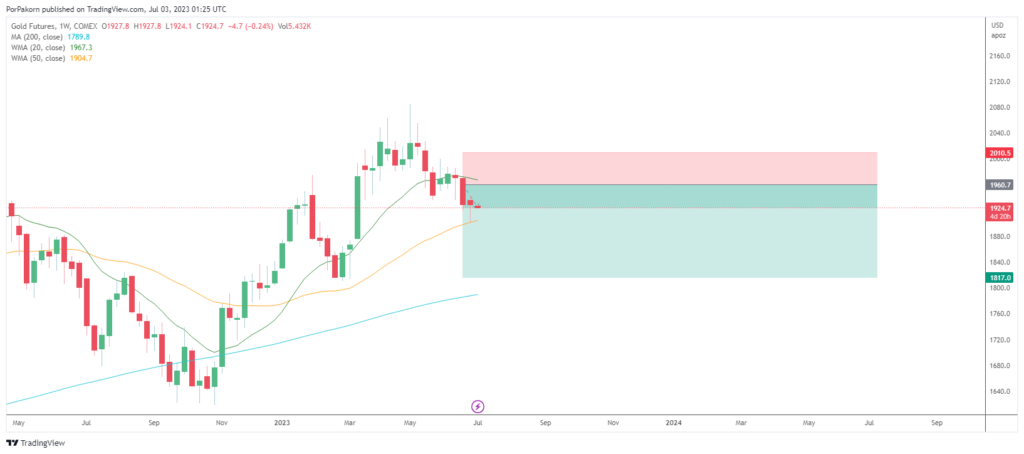Introduction: Gold Signal
Recently, the price of the gold signal has found itself in a state of flux, with little reprieve from the pressures of hawkish rhetoric and an impending interest rate hike. On Friday, the precious metal loomed near the $1,910 per ounce threshold, remaining perilously close to the three-month low it had reached on June 28th, when it touched $1,907. These lackluster market conditions can be attributed to the persistently hawkish stance adopted by the Federal Reserve, resulting in limited demand for non-yielding assets like gold. Moreover, the Federal Reserve’s keen focus on the closely monitored critical PCE price gauges has revealed persistent inflation in the US economy. This revelation has further bolstered the central bank’s case for a 25 basis point rate hike at the upcoming July meeting.

Gold’s Vulnerability to Hawkish
Rhetoric Gold Signal, often considered a haven investment, has encountered a turbulent period due to the consistent hawkish stance emanating from the Federal Reserve. This hawkish rhetoric has created a subdued environment for precious metals, including gold, which traditionally serves as a hedge against economic uncertainties. Consequently, the lackluster demand for these non-yielding assets has caused gold’s price to languish near a three-month low. Investors have been cautious, adopting a wait-and-see approach, as they closely monitor the Federal Reserve’s next steps and assess the potential impact on the gold market.
Inflation as a Catalyst for Gold’s Price Dynamics
The Federal Reserve‘s emphasis on key PCE price gauges has underscored the persistent inflationary pressures plaguing the US economy. Notably, the core PCE price index, an essential measure monitored by the central bank, exhibited a 4.6% annual rise in May, reaffirming the persistent stickiness of inflation. This gauge has maintained a relatively narrow band since its initial ascent to 4.6% in December 2022. Fed Chair Jerome Powell’s recent remarks highlighted the time and effort required to bring inflation back down to the targeted 2%. Additionally, Powell hinted at the possibility of two more rate increases within the current year. Such prospects have further fueled concerns among investors and served as an additional factor constraining gold’s price.

Global Central Banks’ Tightening Policies and the Implications for Gold Signal
While the Federal Reserve deliberates its course of action, other major central banks, including the European Central Bank and the Bank of England, have proceeded with further tightening measures throughout June. These institutions have also indicated their readiness to raise interest rates as a countermeasure against inflationary pressures persistently. The collective efforts of central banks worldwide have set the stage for a global shift in monetary policy, which could impact gold and other precious metals. As investors seek higher-yielding assets in response to tightening policies, the demand for gold may experience a relative decline. The interplay between central banks’ actions and gold’s price dynamics underscores the significance of monitoring these policy shifts as a barometer for global market conditions.

Conclusion: Gold Signal
Navigating the complexities of the gold signal requires a keen understanding of various factors that influence its price dynamics. The impact of hawkish rhetoric from the Federal Reserve, persistent inflationary pressures, and tightening policies of major central banks all contribute to the current challenges faced by gold investors. By keeping a close eye on these developments, investors can make informed decisions and position themselves strategically within the ever-evolving global market landscape.






Thanks for sharing. I read many of your blog posts, cool, your blog is very good.
Thank you for your sharing. I am worried that I lack creative ideas. It is your article that makes me full of hope. Thank you. But, I have a question, can you help me?